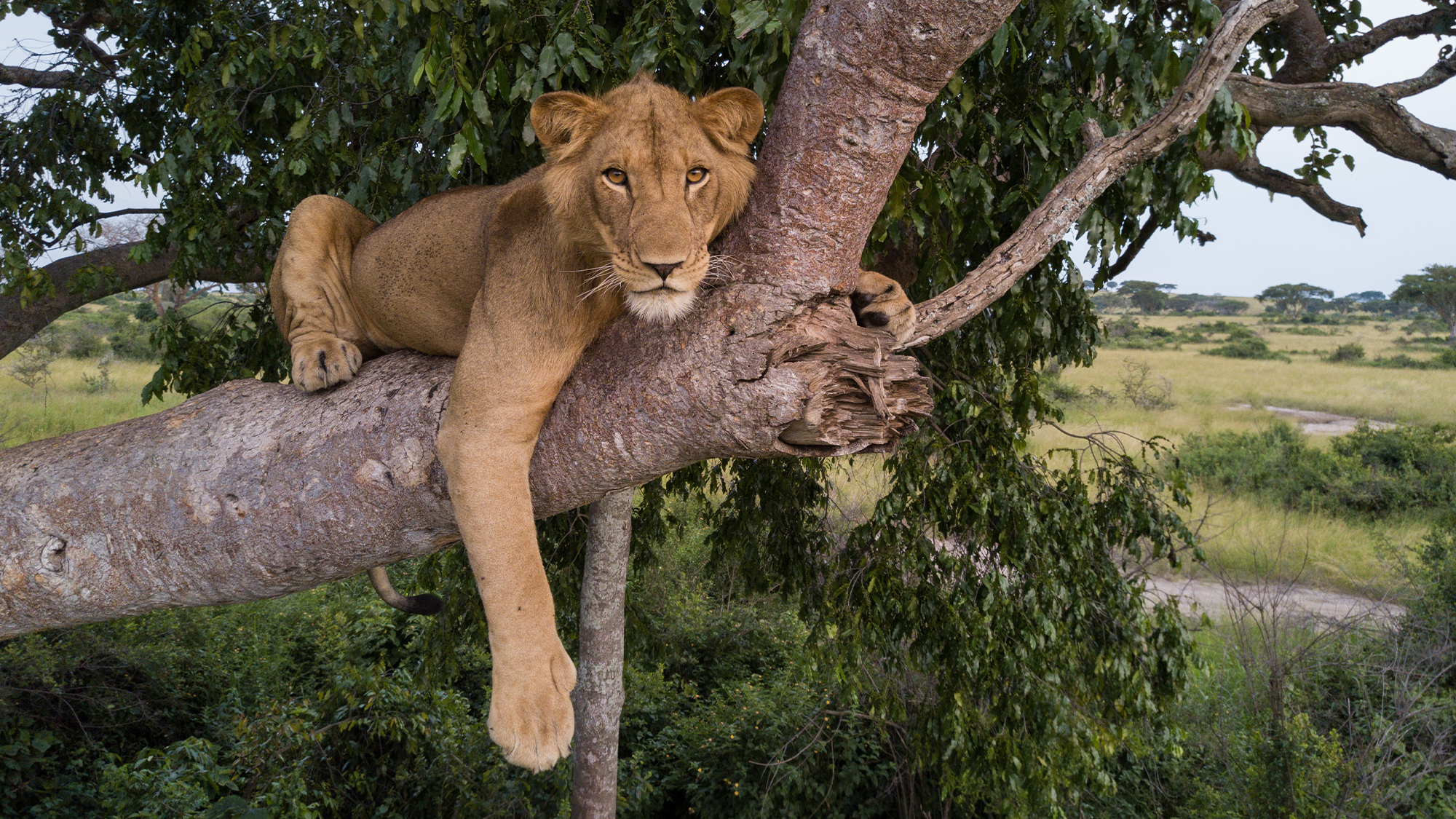Despite their mighty roars, fearsome jaws, and ambush hunting tactics, lions are not well known for their swimming. Other large predators are often lurking in the water, so these big cats must have a major motivation to get wet.
In February, a team of scientists documented two African lion brothers swimming across some dangerous waters in Uganda. Using high-definition cameras and heat detection cameras on drones, the team observed the males making a daring crossing of the hippopotamus and Nile crocodile filled Kazinga Channel. The record-breaking long-distance swim is detailed in a study published July 10 in the journal Ecology and Evolution.
[Related: Invasive ants leave lions scrambling for prey on the savannah in an ecological chain reaction.]
Jacob and Tibu’s journey
One half of this dynamic duo of lion swimmers was a local icon known as Jacob. This 10-year-old lion’s claim to fame is surviving several life-threatening incidents.
“Jacob has had the most incredible journey and really is a cat with nine lives,” study co-author and Griffith University conservation biologist Alexander Braczkowski said in a statement. “I’d bet all my belongings that we are looking at Africa’s most resilient lion: he has been gored by a buffalo, his family was poisoned for lion body part trade, he was caught in a poacher’s snare, and finally lost his leg in another attempted poaching incident where he was caught in a steel trap.”
Jacob was joined by his brother Tibu, whose survival is also significant. According to Braczkowski, they live in an area with high poaching rates where the population has been halved in only five years.
“His swim, across a channel filled with high densities of hippos and crocodiles, is a record-breaker and is a truly amazing show of resilience in the face of such risk,” says Braczkowski.
Why did the lion cross the channel?
Previous reported swims by African lions have ranged from about 32 feet to only a few hundred feet. Some of these swims have resulted in crocodile attacks, so it appears that the lions must need a good reason to cross rivers this way. Jacob and Tibu swam almost a mile–or 1.5 kilometers.
“It’s likely the brothers were looking for females,” Braczkowski explained. “Competition for lionesses in the park is fierce and they lost a fight for female affection in the hours leading up to the swim, so it’s likely the duo mounted the risky journey to get to the females on the other side of the channel.”

CREDIT: Alexander Braczkowski.
The channel also has a small connecting bridge on the other side and human presence there was probably a deterrent. A 2023 study found that humans are the top predator in Africa’s savannahs, with its animals more afraid of human voices than lion vocalizations.
While the swim is exciting, this behavior is a direct symptom of some earlier research by this team, which highlighted skewed sex ratios in lion populations here. During six months of intensive monitoring and filming in this new study, the team only observed one female for a period of three days.
[Related: The rare case of a lioness with a mane.]
“Jacob and Tibu’s big swim is another important example that some of our most beloved wildlife species are having to make tough decisions just to find homes and mates in a human-dominated world,” said Braczkowski.
Braczkowski is currently the scientific director of the Volcanoes Safaris Partnership Trust’s Kyambura Lion Project. Since 2017, he has been working with the Ugandan Government to count lions and other predators in the country.




















Discussion about this post